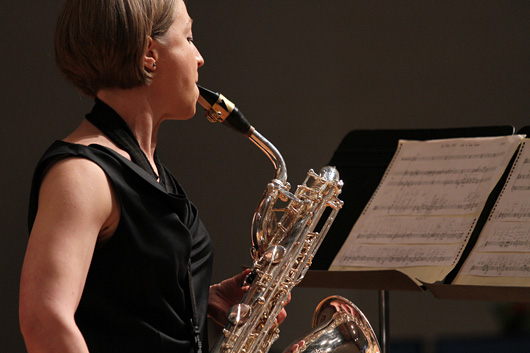Computer Music and GACSS

the transPeriod() function from GACSS
custom sound synthesis software
1992-98
Genetic Algorithms in Composition and Sound Synthesis, otherwise known as GACSS (pronounced “gax”), was an original sound synthesis program I wrote and used between 1992-1998. GACSS allows the composer to graphically visualize and imagine new sounds at the waveform period level, and to turn this visualization into sound events with novel variance over time. Waveform periods are designed in terms of length (pitch), curvature(s), and complexity. A number of breakpoints along the period are specified, and the types of curves between those breakpoints can be set (e.g. linear, exponential, or inverse exponential). To create a durational event using that period, GACSS repeats it until the duration has been achieved. However, that period is not copied over-and-over verbatim, but is instead modified on each repetition based on the trans value.
Trans defines the window in which temporal transformations of the repeating period can drift from the the original period’s center. An easy way to think of this is as a knob for noisiness. The higher the trans, the more the noise. The principal relies on the fact that as long as a number of successive periods are similar enough, they will be perceived as belonging to a single pitch—even if they change over the course of that event. The more distorted the period becomes from the original, the more the overall sound becomes noise.
Genetic Algorithms (GAs) were chosen as a method for timbral search. The number of parameters available to the composer can produce an infinite number of possible sounds. A GA was added to help the composer find timbres of interest within this search space of possible sounds.
lotted ebb (1998)
mix whit (1997)
Over the years I (and others) composed a number of works using GACSS, both for sounds alone (we called it “computer-generated tape” back then), and for instruments with sound. lotted ebb and mix whit are solo tape pieces that were composed for premieres at the 3:2 New Music Festival in New York.
If But Or (1995)
If But Or is another tape piece and was composed for the 3:2 New Music Festival in Wesleyan Connecticut, and was my first work created using GACSS. If But Or was issued on a CD titled waveFORMation, Electronic Music Studios CD EMS 9700, 1997.
Not Pitch (1995)

Saxophonist Rhonda Taylor performing Not Pitch at New Mexico State University, 2009
photograph by Robert Yee
Not Pitch was written for Northwestern University sax professor and PRISM Quartet member Taimur Sullivan. The work, for baritone saxophone and computer-generated sounds was premiered by Taimur at the Settlement Music School in Philadelphia, PA. In more recent years, New Mexico State Professor Rhonda Taylor toured the work around the United States as part of her 2009-2010 concert season. In 2012 Rhonda released a new recording of the work on her CD titled Interstice. This is available on iTunes, Amazon, and CD Baby.
Epistatic Niche (1994)
Epistatic Niche uses ideas from natural genetics and the workings of genetic algorithms as a compositional model. The work is for trumpet, piano, percussion, and computer-generated sounds. It was written for the UIUC Contemporary Chamber Players’ 1994 Southeastern United States tour. Its most recent performance was in 2004 at a Faculty Composer’s Concert at the Krannert Center for the Performing Arts.
Why GACSS isn’t a MIDI Synthesizer
GACSS can be used to generate both pretty and ugly sounds. But one thing it doesn’t do is produce sounds that mimic traditional instruments. This is by design. Others use technology to recreate those things we already have. I want to use technology to create new sounds and visuals that we can’t create otherwise. I like to find what the machine is good at and exploit that instead of trying to get it do what I’m already good at imagining.
Historical Background and Collaborators
When I started working with computer music around 1990, the technology was quite different than what we have available today. Computers didn’t yet come with sound cards, there was no SuperCollider or Max/MSP, and disk space to store created sounds was extremely limited. To engage with the medium, I got my start working in the University of Illinois’ Computer Music Project, a lab which provided a home-built digital-to-audio converter (DAC) and a in-house developed Music V type language to work with called Music 4C. I authored (coded) various instruments for Music 4C and used them to create new works, including “Uninduced Approximation“.
By 1992 a decent commercial sound card was available for the PC. I wrote a grant to fund development of an original software package using genetic algorithms (which became GACSS). This grant was funded by the University of Illinois Campus Research Board, and began a many year path of creation and collaboration. My collaborator on the grant was Zack Browning, one of my composition teachers at the time. Zack and I both used GACSS in the creation of new works for many years. The works I made with it are linked above. Much of what Zack made with it was released on a CD called Banjaxed (mostly instrument and tape). I highly recommend you get a copy of this disc if you can find it.
Related Projects
- Cut/Paste Computer Music
- Instrumental Compositions
- Works for Low Trumpet
- Full listing of my musical works (includes album download)
- More Like This
